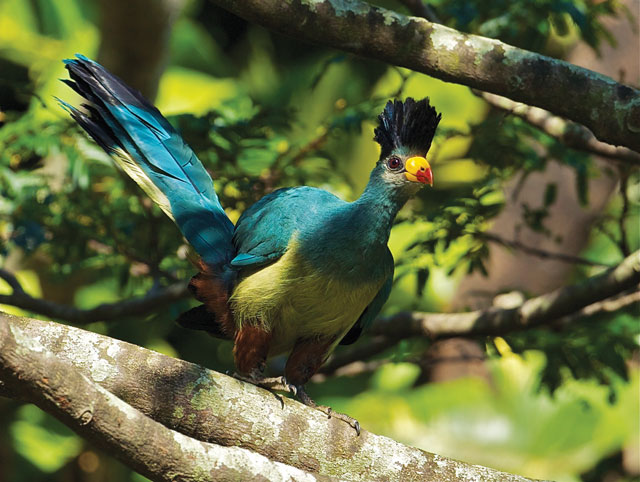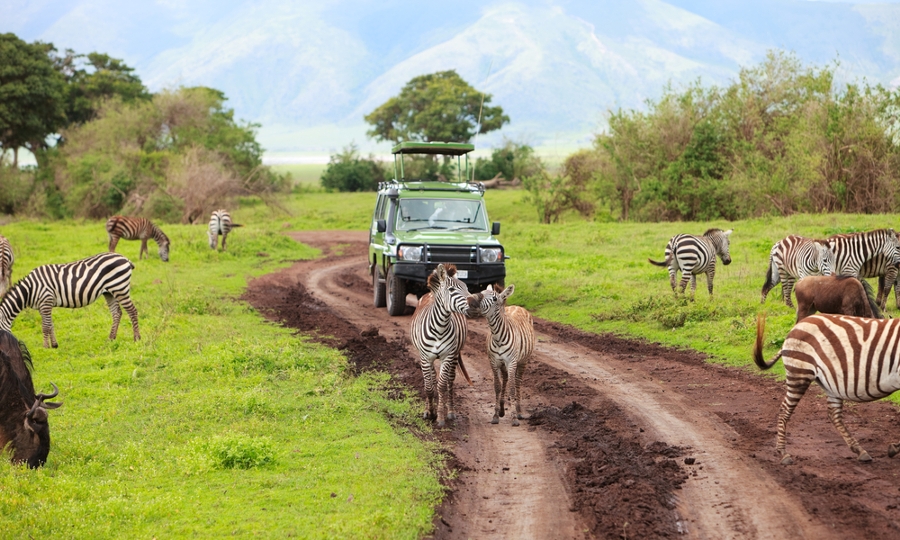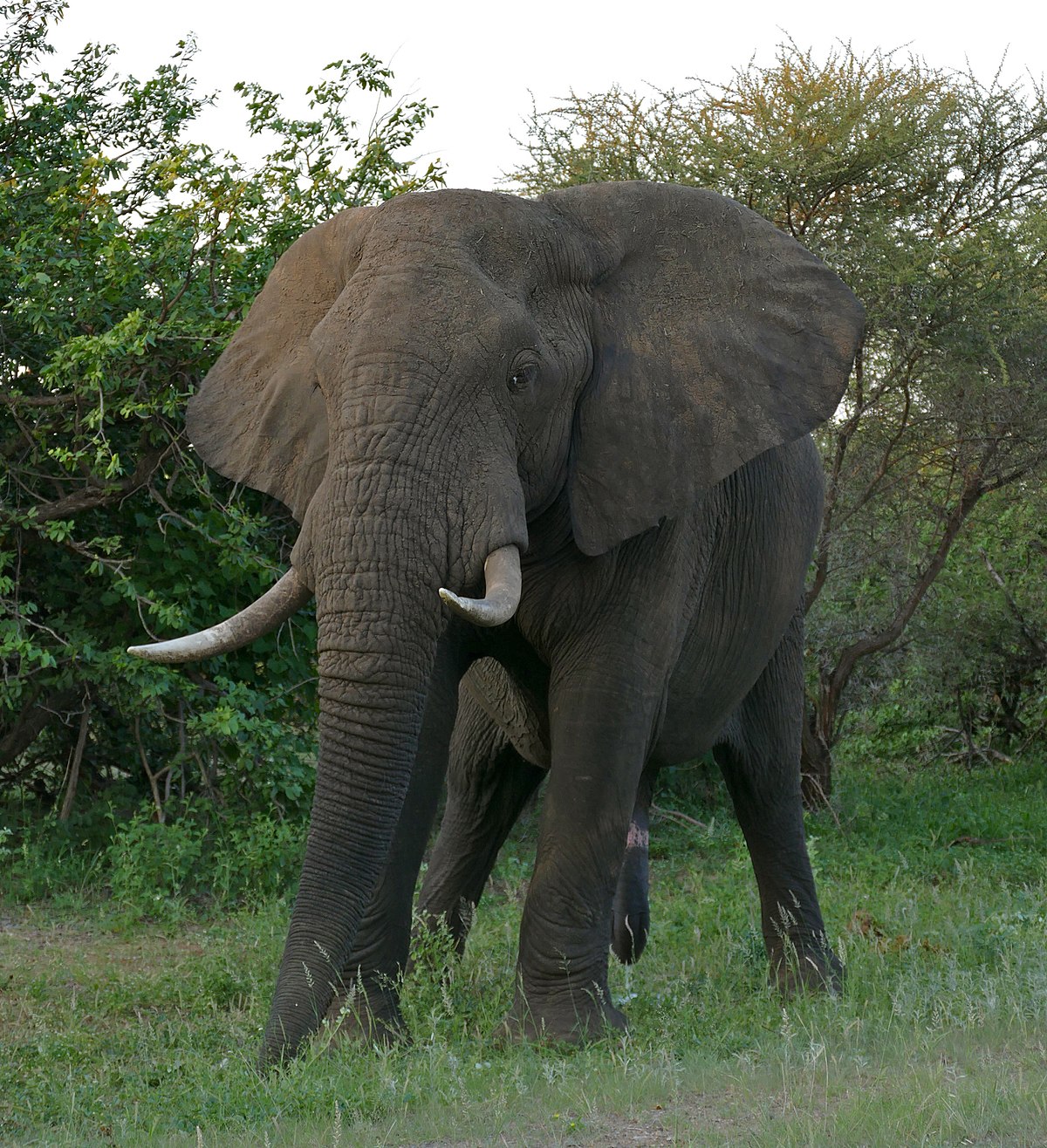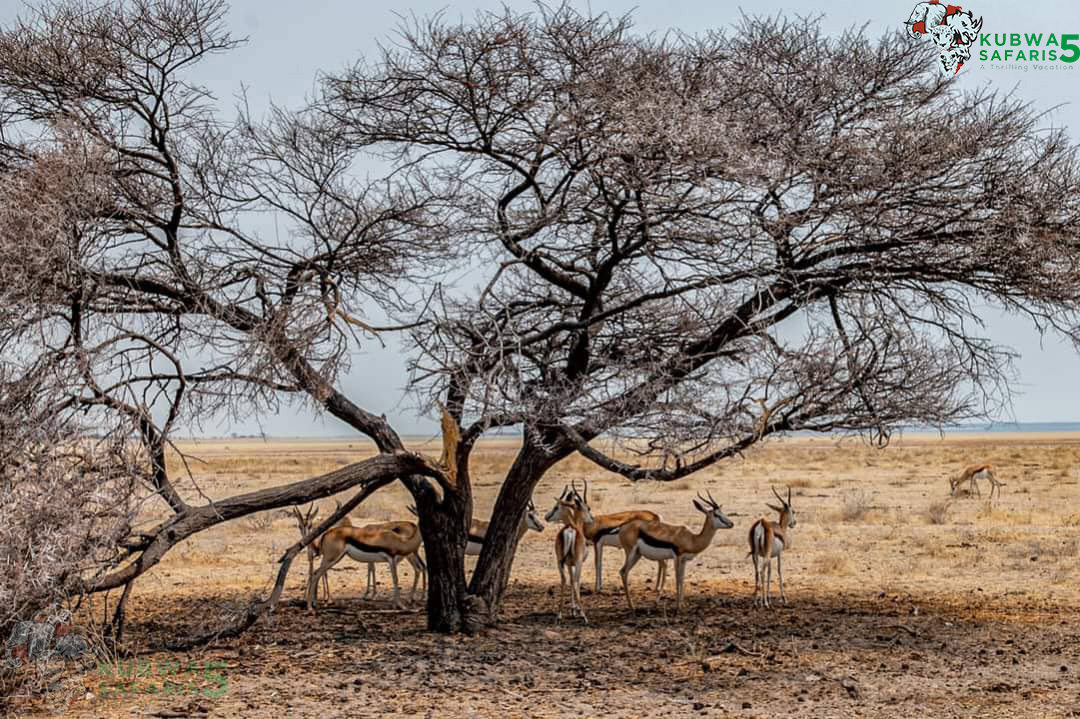Table of Contents
7 Best Things To Do Ruaha National Park
7 Best Things To Do Ruaha National Park include; game drives, bird watching, cultural walk and camping. This park is found in Tanzania , in the eastern part of Africa.
Ruaha National Park
The name Ruaha was derived from the great Ruaha river. It covers a total land area of 7,809 sq. ml. This park has two seasons i.e. dry season from May to October and wet season from November to March. It is 250km way from Dar-es-Salaam. It is surrounded by different communities which are Ikoga Mpaya , Igomelo , Nyeregete and finally Luhango .
Green woodland, fig, doum palm, acacia forests, baobab trees and tamarind are vegetation found in this park. Ruaha national park has over 500 bird species, 80 animal species and some of the big five are inclusive( lions, elephants, buffalo, leopard).
It was established in 1964 and was the largest park in Tanzania until Nyerere National park was established.
Ruaha was derived from Ruvaha which is a hehe word means river and the main gate of Ruaha National park is 120 kilometers in the Central to Southern part of Tanzania. This park is surrounded by different game reserves which include;
Rungwa game reserve
Mbomipa wildlife area
Muhesi game reserve
Kizigo game reserve
During rainy season, because of too much rain most camps close up and this is due to the muddy roads and difficulty to access the area and this mainly happens between March to May.
The following are the 7 best reasons to visit Ruaha park;
1.Bird Watching

Bird watching is one of the best 7 reasons to visit Ruaha National Park. The park is a home to over 500 bird species and these include; African fish eagle, Ashy starling, Black- bellied bustard, Goliath heron, Long- crested eagle, crested barbet.
Birding is one of the must do activities when you get to the park. Take part in bird watching and this is can be done during the wet season in the months of December, January, February, March and April because the weather is always cool and at this time there is breeding due to many bird species nesting.
2.Boat Cruise
Presence of River Ruaha favors boat ridding while spotting water animals like crocodiles , fish and even other animals like elephants, giraffes and others which come to river to take water during dry season and this is best done during may to November.
Boat cruise can be done during morning hours and evening hours to be able to see wild animals along the shores of the river. Because of lifejackets provided, the boat cruise has no age restrictions and this helps the tourists travelling as families to get the same experience.
Because of sun rays during morning and sunset during the evening hours, the water waves are limited and with the freshness of cool air gives the best experience of boat cruise as one of the things to be done in the park.
3 Game drive

Over 80 animal species are found in the park and this favors game drives which is done during the day and night. Animals like buffalos, elephants, giraffes can be spotted easily during the day and animals like lions and leopards which hunt during night can be easily spotted during night. This is supported by the open vegetation found in the game park.
Ruaha National park has 40% of Tanzania’s lions and these make 10% of the lions population in Africa.
Night game drive is done in the park and it gives access to the tourists to be able to see nocturnal animals like lions, leopards, hyenas, bush babies ,civet cats which hide during the day.
4.Photography
The land scape of Ruaha National park characterized by flat lands, rivers, mountains which contribute to the nature call for attention of photographers to take shots that can be used for memorations and for business in the tourism industry. Phones, camera lens, and well designed equipment can be used and are allowed in the game park at no extra costs.
5.Cultural walk
When visitors participate in cultural walk, they get the knowledge about the tribes in the places visited. About five communities are found around Ruaha National Park. As part of the experience to visitors, they get to know the way of living and habitat of the local people in the community visited.
The visitors get to know the life of the local people in terms of culture, dressing code, their history ,food taste, ancient stories tells and their homesteads.
During cultural walk, visitors give out donations to the local community like providing food to the needy, school materials to the children, clothes to the old people and so on.
In a way of giving back ,the visitors provide market to the local people by buying their items like art pieces, local food among others.
6.Guided Bush walking
This is one of the most common methods used in Africa during the times of exploring the beauty of the parks. It gives insight about the animals and vegetation found in the park. This gives best experience to visitors. On the side of the photographers, it gives them chance to get closer to nature and animals.
Guided bush walk in the park is mainly common during the rainy season when the roads are muddy when even four wheel drive vehicles can’t move. During the bush walk, there is usually an armed game ranger to ensure the safety of the tourists.
7. Camping
As one of the best experiences, camping in the park is one of the activities in this park. Camp fire is organized to provide warmth to visitors and also lighting. Major camping sites may include Ikuka camp, Mdonya camp, Asanja Ruaha and others.
Most camps close up during the wet season and this is due to muddy roads and difficult to access the park and this mainly happens between March to May.
The above 7 mentioned points are one of the best reasons to visit Ruaha national park in Tanzania as they will provide you with a beautiful and memorable experience.
Accessibility To Park
By Air Transport
The quickest and easiest way of accessing the park is by flight. This can be from Dar-es-salaam to the park. Julius Nyerere International Airport can be used as the airstrip.
- International Travel: If you are traveling from outside Tanzania, you will need to make arrangements to travel to Dar es Salaam or Kilimanjaro International Airport. These are the main entry points in the country.
- From Dar es Salaam or Kilimanjaro International Airport, you will need to take a domestic flight to Iringa. Iringa is the closest major town to Ruaha National Park, and it has an airport with scheduled flights.
Once you arrive in Iringa, you can hire a private vehicle or take a taxi to reach Ruaha National Park. The distance between Iringa and the park is approximately 130 kilometers (80 miles), and the journey takes around 2-3 hours.
Entrance Gate.
Ruaha National Park has several entrance gates, and the choice of gate may depend on the location of your accommodation or the specific area you wish to explore. The main entrance gates are Msembe and Jongomero.
By Road via;
- Morogoro: If you are in Morogoro, you can access Ruaha National Park by road. The park is located in the southwest of Morogoro, and the distance between the two can be covered by driving. The journey typically takes around 5-7 hours, depending on the road conditions and the specific location within Morogoro you are departing from. It is advisable to plan your route in advance and ensure you have a suitable vehicle for the journey.
- Dodoma: Similarly, if you are in Dodoma, you can reach Ruaha National Park by road. Dodoma is located in the Northwest of the park. The journey from Dodoma to Ruaha National Park takes around 6-8 hours, depending on the specific route taken and the road conditions. It is important to plan your journey, consider fuel and supplies, and have a reliable vehicle for the trip.
Salaam, Morogoro and Dodoma Tanzania cities can be used to access the park
Accommodation of the park
Ruaha National Park offers a variety of accommodation options to suit different preferences and budgets. Here are some popular choices:
- Lodges: Ruaha River Lodge is located on the banks of the Great Ruaha River, this lodge offers comfortable rooms, stunning views, and amenities such as a swimming pool and restaurant. Mdonya Old River Camp: Set in a secluded area, this eco-friendly camp provides spacious tents with en-suite bathrooms, giving you a true wilderness experience. Jongomero Camp: Situated in a remote area of the park, this luxury tented camp offers spacious tents, private verandas, and personalized service.
- Tented Camps: Kwihala Camp is Known for its intimate and rustic atmosphere, Kwihala Camp offers comfortable tents with -suite bathrooms and a dining area where you can enjoy delicious meals. Tandala Tented Camp: This camp provides comfortable tents with private verandas and en-suite bathrooms. It offers guided safaris and has a swimming pool and a lounge area.
3. Campsites; Ruaha National Park also has designated campsites for those who prefer a more adventurous self-sufficient experience. These campsites usually have basic facilities like toilets and showers, and you need to bring your camping gear and supplies.
Routes to the park
There are several routes to reach to the Park in Tanzania, depending on your starting point and mode of transportation.
- Dar es Salaam to Ruaha National Park: By Air, Fly from Dar es Salaam to Iringa Airport. From Iringa, you can hire a private vehicle or take a taxi for the road journey to Ruaha National Park. By Road, Drive from Dar es Salaam to Iringa, which takes approximately 8-9 hours. From Iringa, continue by road to Ruaha National Park, a journey of around 2-3 hours.
- Kilimanjaro International Airport to Ruaha National Park: By Air, Fly from Kilimanjaro International Airport to Iringa Airport. From Iringa, proceed to Ruaha National Park by road. By Road, Drive from Kilimanjaro International Airport to Ruaha National Park, which takes approximately 10-12 hours.
- Arusha to Ruaha National Park: By Air, Fly from Arusha to Iringa Airport. From Iringa, you can continue by road to reach Ruaha National Park. By Road, Drive from Arusha to Ruaha National Park, which takes approximately 12-14 hours.
The park fee
| Non Residents | Fees |
| Adults(above 16yrs) | 30USD |
| Children(5-15yrs) | 10USD |
| Residents | Fees |
| Adults(above 16) | 15USD |
| Children(5-15yrs) | 5USD |
Other costs incurred includes;
Camping fee
Hiking fee
Walking fee
Ranger fee
Please note that these fees are subject to change, and it’s recommended to verify the park fees by visiting the official website of Ruaha National park or contacting the park authorities directly before your visit. They will have the most up-to-date information on park fees and any additional charges that may apply.
The major animals found in the park
Ruaha National Park in Tanzania is known for its diverse and abundant wildlife. Some of the major animals you can expect to encounter in the Park include:
- African Elephant: The park is home to a large population of African elephants, and it is one of the best places in Tanzania to see these majestic creatures.

- African Lion: Lions are frequently spotted in Ruaha, and the park has a significant lion population. They can often be seen resting on the rocky outcrops or patrolling the grasslands.
- African Buffalo: These large and powerful herbivores are commonly seen in Ruaha National Park, either in small groups or large herds.
- African Leopard: While leopards are elusive and often nocturnal, they can be spotted in Ruaha. The park’s dense woodlands and riverine areas provide suitable habitats for them.
- Cheetah: Although cheetahs are not as abundant in Ruaha as some other predators, they can be found in the park. Their slender bodies and incredible speed make them fascinating to observe.
- Giraffe: The Park is home to several giraffe species, including the Masai giraffe. These elegant animals can be seen gracefully roaming the park’s open savannahs.
- Hippopotamus: Ruaha has several rivers and water sources where hippos can be found. These semi-aquatic creatures spend their days submerged in water to keep cool.
- Zebra: Both the common zebra and the rare endangered species, the African wild dog: African wild dogs, also known as African painted dogs, can be found in Ruaha. They are highly social animals and known for their cooperative hunting behavior.
- Antelope Species: Ruaha is home to various antelope species, such as impalas, elands, greater kudus, sable antelopes, and roan antelopes.
- Birdlife: Ruaha National Park boasts a rich diversity of bird species, with over 570 recorded species, including raptors, weaverbirds, and migratory species.
These are just a few examples of the wildlife that can be found in the Park. The park’s diverse habitats support a wide range of animals, providing ample opportunities for wildlife viewing and safaris.
FREQUENTLY ASKED QUESTIONS
What is Ruaha Park famous for?
The best time to visit Ruaha National Park depends on your preference and what you want to experience and see during your visit. Here are the different seasons and factors to consider:
Dry Season (June to October): This is the peak tourist season Ruaha National Park has. The weather is dry, and vegetation becomes sparse, making it easier to spot wildlife as they gather around water sources, including the Great Ruaha River. The reduced foliage also improves visibility for game viewing. Wildlife concentrations are high during this period, and it’s an excellent time for game drives and walking safaris. However, note that temperatures can be hot during the day.
Wet Season (November to May): The wet season is characterized by occasional rains, with peak rainfall occurring from March to May. This season is characterized by lush greenery in the park and it is an ideal time for birdwatching, as migratory bird species arrive. The landscape is transformed, and you may witness newborn animals and an abundance of birdlife. While wildlife disperses more due to the availability of water sources throughout the park, it still offers rewarding game viewing opportunities. It’s worth noting that some lodges and camps may close during this season, and some roads may become impassable due to heavy rains.

